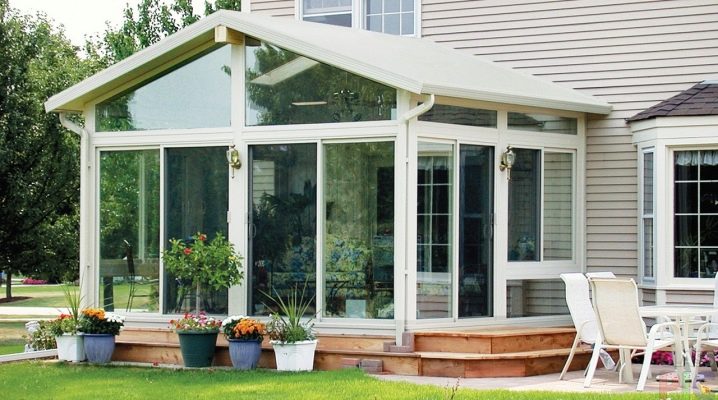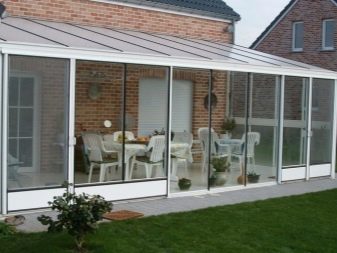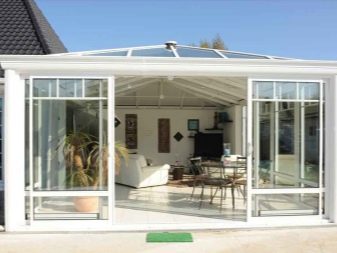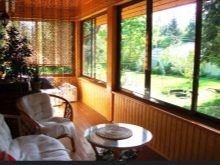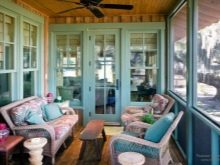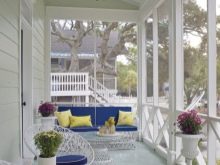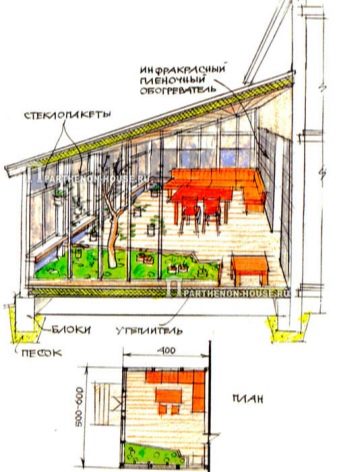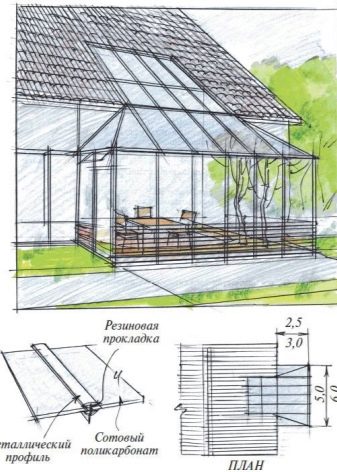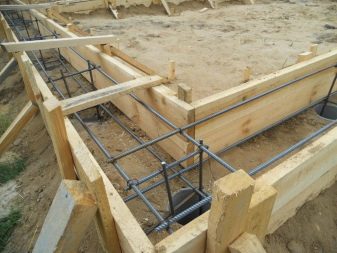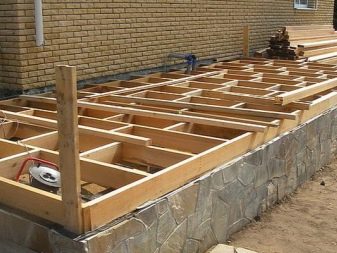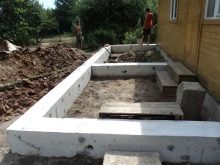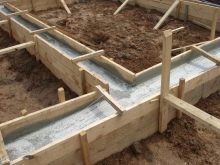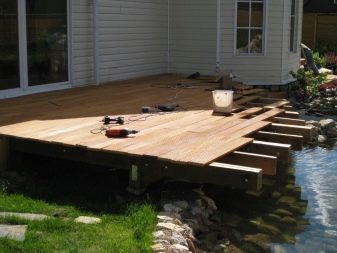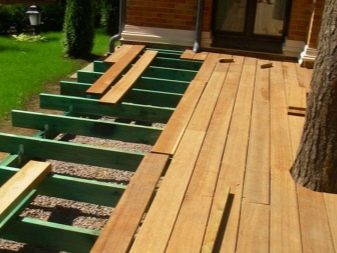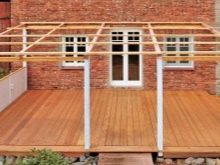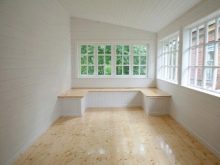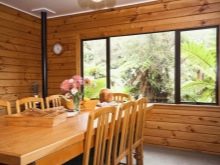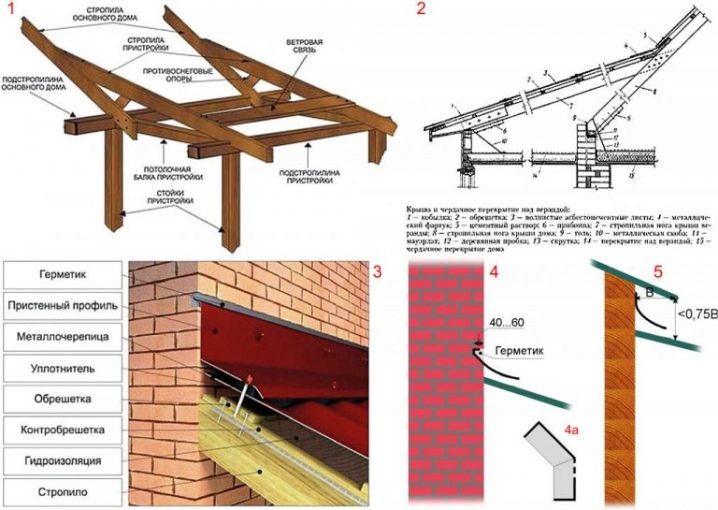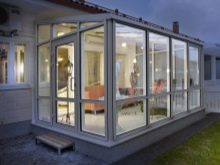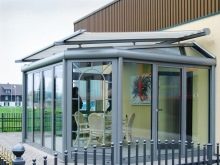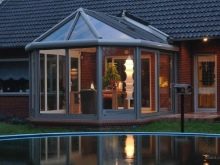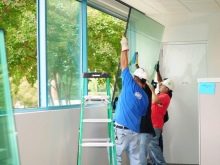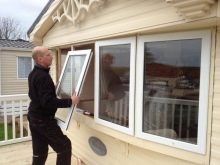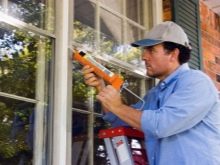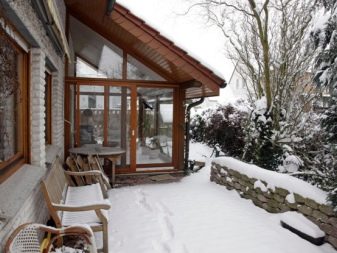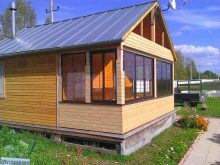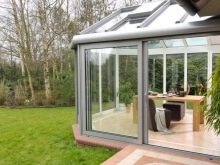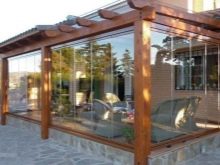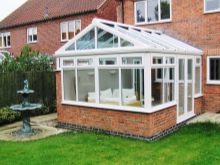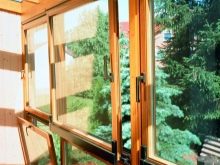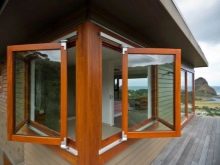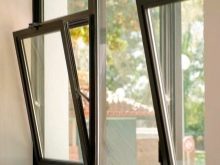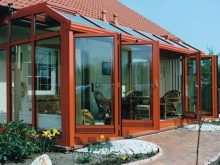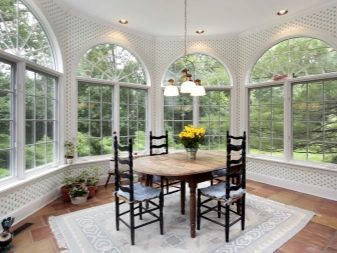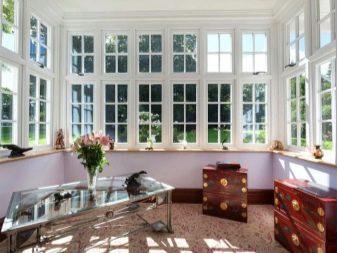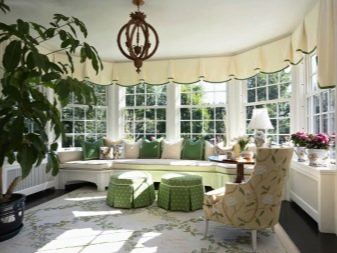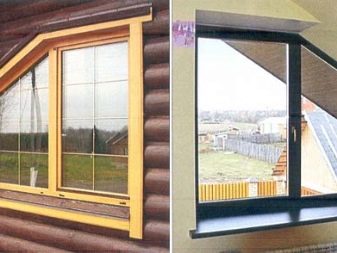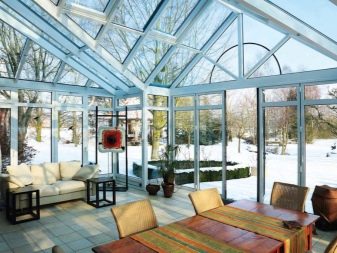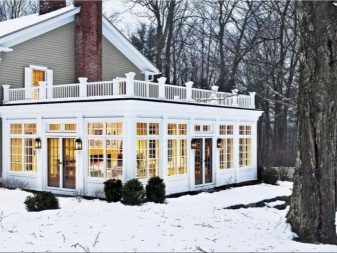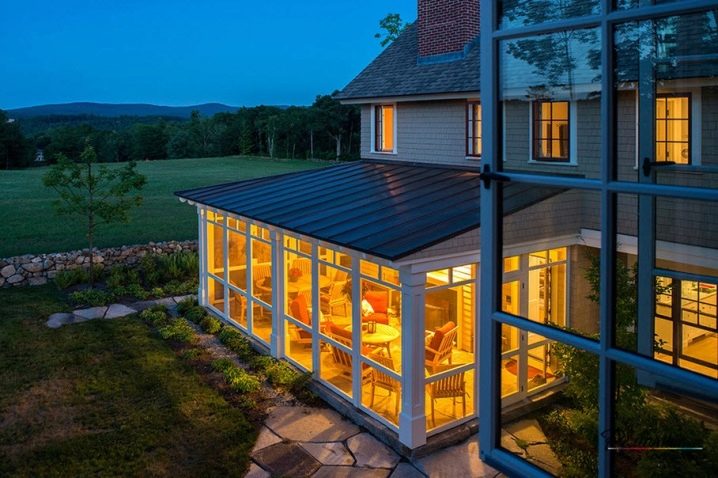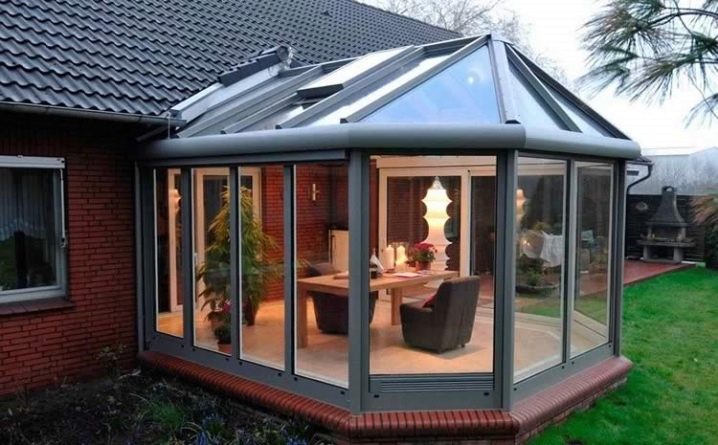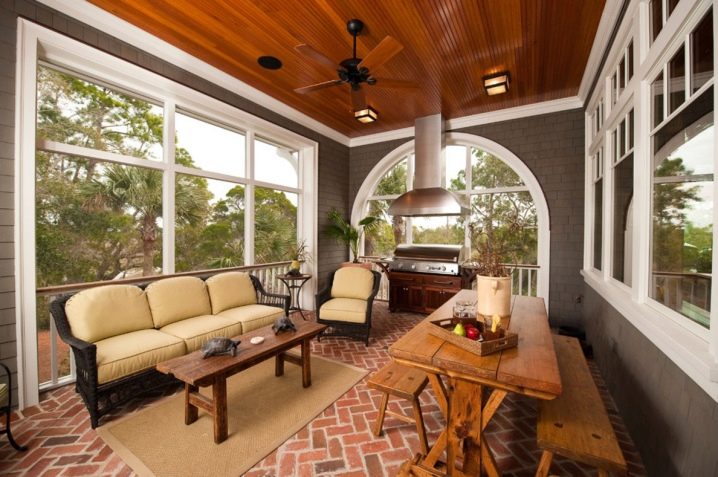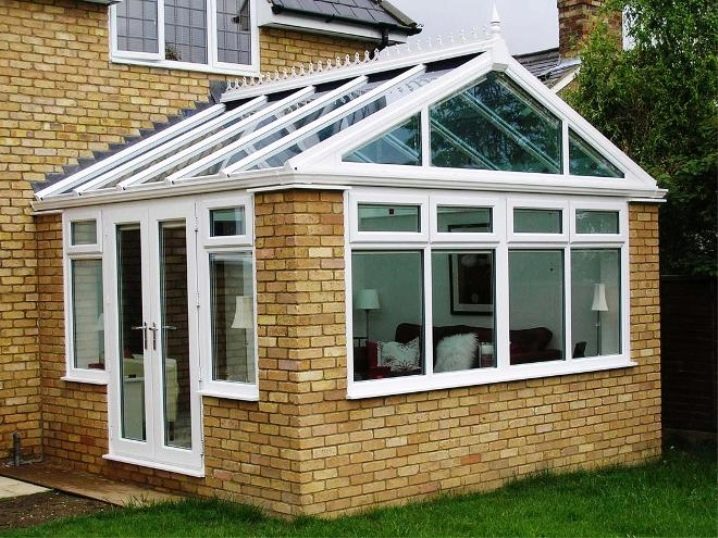Veranda to the house with plastic windows: design features
In the Soviet-style rural houses, the verandas were immediately built along with the building. The buildings had common walls and a roof. Such an extension was an alternative to the hallway, from which the doors led to the living quarters. Unlike the corridor, the veranda was not heated, and also played the role of a vestibule, helping to retain heat in the building. Now they are building full-fledged houses with hallways, kitchens, bathrooms. In the projects of some buildings immediately laid the presence of a veranda. But if it is not there, modern materials and technologies help to complete the construction to the finished house.
Nowadays, the veranda is not considered as a utility room., it becomes a favorite vacation spot for the whole family. The extensions are equipped with large windows and stylish furniture, they are light and cozy.
Building location
Where to build a veranda, each owner of a private house decides for himself. You can consider different projects and choose the most appropriate option for your family.
The most common option is when the porch is attached from the entrance to the house. But some owners are planning target construction. For example, in the presence of a small kitchen there is a need to create additional space in favor of the dining room. In this case, make a door from the kitchen and build a veranda. An extension from the side of the children's room will help to arrange a summer playroom, and from the side of the hall it can become an office.
Some owners choose a place for a veranda taking into account the cardinal directions in order to use the maximum of natural light.
Before dinner, the eastern side will receive a large amount of sunlight, as well as the western side after lunch. The southern part of the house is always more warm and caressed by the luminary, it is suitable for a children's room or a winter garden. The most dreary place for the veranda is the northern wall of the house, but in southern latitudes it will be a salvation from the summer heat.
Design
The veranda is a closed glazed structure that has a foundation, walls and roof, a capital building that allows you to expand the living area of the building.This design can not be regarded as a light arbor on the back of the yard. The project will have to be coordinated and registered in special departmental organizations. Sometimes the review of a plan lasts for several months, so it is best that this be the winter part of the year.
Having decided on the place of construction, it is necessary to calculate the parameters of the future structure. The size of the room depends on the target and the material capabilities of the owner. You can swing at the construction of the entire wall.
But it should be remembered that if this wall has windows, they fall into the verandah zone, and even with continuous glazing the extension of natural light in the rooms will be less.
It is necessary to choose the shape of the structure and draw a sketch. The building should be marked on the general plan of the site, as well as a drawing is made directly of the veranda itself and its adjacency to the house.
The project specifies the types of building materials and calculates their number. It would be right to build an extension of the same material as the house, but the combination is also allowed, and a brick building with a wooden veranda looks quite good.
Foundation
By creating a project and obtaining permission from the BTI, you can proceed to construction. At the initial stage, the site is cleared and the fertile part of the soil is removed.
Next, the foundation is laid, for the veranda suitable columnar or ribbon. It should not be tied to a common home base, they have different mass and shrinkage. To prevent the monolith of the house from pulling behind it a light extension, a gap of five centimeters is left between them. The depth of the basement falls to a layer of freezing, but the type of soil and groundwater occurrence should be taken into account. The building can "play" and it will need a more solid foundation.
For a large porch of brick and with a heavy roof will need a strip foundation. It is necessary to dig a trench, install a timber formwork in it, lay reinforcement and pour concrete (a mixture of sand, cement, crushed stone). Leave for a week until completely dry, then remove the formwork.
To prevent cracking during hot weather, the drying foundation is moistened several times a day with water.
For a small light porch there will be enough two pillars in the corners. Sand is poured into prepared pits for 20 centimeters, the pillar is made of brick or a pipe is inserted, then it is poured with concrete. The space between the pole and the ground is covered with sand.
Floor
Beams are laid on the foundation, then a rough coating is mounted. The space under the future floor should be insulated with expanded clay, should be laid in two layers with roofing felt. Install logs for the finished floor and lay the boards. If you make a concrete floor, you will need additional insulation.
Walls
For frame walls used timber. Bottom trim perform on the bars, which are laid on the draft floor. In the cut grooves insert the rack at a distance of half a meter from each other. A bar is also laid on top (for the upper strapping). From above establish the beam uniting a rafter design. The skeleton of the walls is lined with material that is in harmony with the building.
Inside the room walls can be sheathed plywood, which is mounted cladding. Outside, wood or siding will do, and insulation and waterproofing should be installed between the exterior and interior cladding.
Roof
If the veranda is built simultaneously with the house, it will have a single roof with it. In a later extension, the roof will join the building. The veranda, built from the side of the house has a sloping roof, and from the front or back side - a gable.It is desirable to choose the roofing for both buildings the same.
Between the roof and the ceiling should be free space for air circulation, and if necessary, you can lay insulation and waterproofing materials.
Glazing
Glazing of the porch is made in different ways: using metal-plastic, polycarbonate, PVC film, aluminum profile, wood. Today, the most popular are plastic windows.
The advantages of this choice include:
- guaranteed long service life;
- frost resistance;
- dustproof;
- double glazing has good noise insulation;
- do not deform under the influence of sunlight;
- water resistance - unlike wood, does not absorb moisture;
- do not need staining, anti-bacterial and anti-corrosion impregnation;
- ease of care;
- easy to install.
Of the drawbacks, it should be noted that plastic is not a natural material; some of its types may emit toxic substances. When purchasing a glass unit, you should ask the selling party for a certificate for the products, where the danger class is marked.If the plastic is not very high quality, over time it can lose its luster and fade.
Pure plastic is weak, it can not withstand the gravity of the glasstherefore, metal-plastic bags are more often used for glazing. This construction is heavy, it requires a bearing support. Non-reinforced plastic is used on lightweight construction, it has thin unhardened glass. Such windows are fragile and traumatic.
For installation of metal-plastic windows, wooden bars (100 by 150 mm) are suitable as supports. During the installation of double-glazed windows, special mounts are used to connect the structure with the end of the frame. The cracks formed are sealed with foam.
The same rules work when glazing the veranda ceiling, if there is a need for it. The ceiling frame must be durable to hold plastic bags, so it is easier to use polycarbonate. Sometimes provide ceiling windows that looks original. For ventilation with ceiling structures, a remote control is usually provided.
Plastic windows keep warm well and are suitable for winter verandas.equipped with a fireplace or other means of heating.Metal structures due to the characteristics of manufacturing can not be too large. If you need a window to the floor, you should pick up other materials (wood, aluminum).
Glazing of the veranda is partial and panoramic. In the first case, the windows are not made on all walls. This is a cheaper option, but the extension will not be light enough. If the windows of the rooms face the veranda, the rooms will remain dimly lit. Panoramic glazing applies to all exterior walls, and sometimes the ceiling. Such an extension receives the maximum amount of natural light.
Opening methods
By the way of opening the frames you can choose any suitable glazing.
- Swing option the most popular. The package consists of two or three parts, at the same time only one part or two can swing open, and the central part remains fixed. The ability to open a window increases the cost of construction, so not every section orders a moving one.
- Sliding frames move on special runners in one or different directions. Each section at the offset comes to another. This design is good for small verandas, as it does not take up much space.
- Rotary sections unfolding on the axis and able to assemble in a certain part of the window. Such mechanisms are also used in frameless versions.
- Tilt windows good for the winter season, they are easily controlled, keep warm, have a mosquito net.
- Multi-frame sliding Options ("accordions") do not provide reliable tightness. This method is also called tilt-sliding. Windows with such a mechanism are manned summer verandas.
Double glazing form
Plastic windows have differences in the form of glass. Most commonly used traditional rectangular glazing. They are good for giving and typical verandas of private houses. Closed frames look classically strictly, can be with one, two or three glasses. The structures have different opening systems (sliding, pivoting).
Veranda round plastic windows are not popular, they are ordered to implement special design solutions. Can be made of PVC and arched windows. They look unusual and expensive. This design is functional, as it is able to open and close.
The most expensive type of plastic construction are bay windows.Their installation is usually trusted by experts to avoid damage to the package.
Trapezoid windows also have the difficulty of installation, in this case wizards will also be needed. This type of glazing looks particularly attractive.
If the terraces are always open and cold, then the verandas can be warm in winter or summer with leaking glazing. Warm packages have a dense structure consisting of several frost-resistant glasses. If you insulate the walls and roof, think over the heating system, you can get a comfortable winter building. Beautiful decoration and modern interior will help to turn the veranda into a favorite place in the house.
Interesting options
Veranda-dining room with panoramic windows and a lean-to roof. The building occupies part of the wall of the main building.
A small panoramic veranda is located next to the open recreation area.
There are several types of glazing: rectangular and arched. Exterior windows are made to the floor. The room has a kitchen and dining area.
The extension is larger than the wall of the main building. Such a project is not considered successful.
Capital winter veranda, built from the same material as the house. Equipped with plastic windows and a door.
The veranda will help a small house to gain additional space, and in a large house it will provide an opportunity to relax with the contemplation of the natural landscape.
Review the modern veranda in the video.
